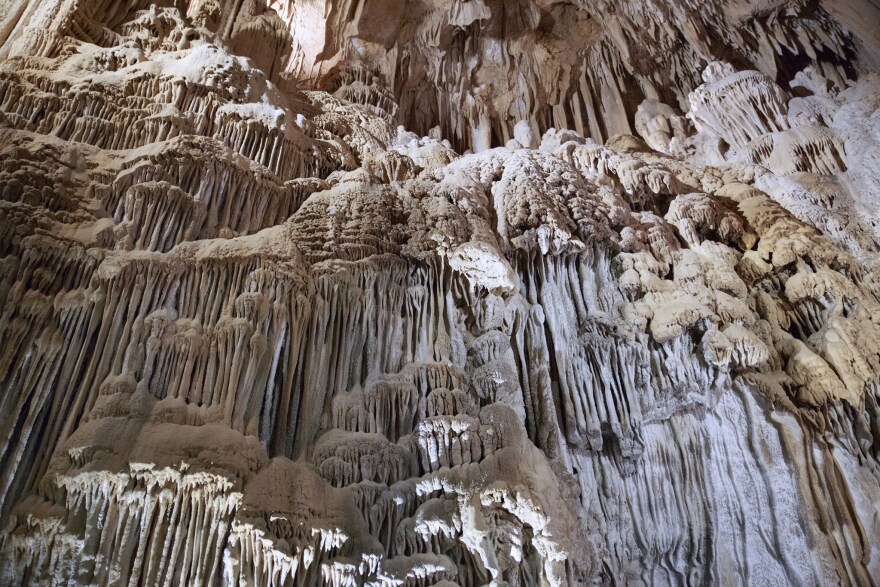Today we head up the road to one of the Shastas you may have missed, especially if you’re an are-we-making-good-time-yet traveler—ancient Lake Shasta Caverns, a National Natural Landmark located near the lake’s McCloud River arm. Visiting the cave formations is amazing in the summer, when it’s blazing hot outside. Such an indescribable pleasure, with sweat trickling down your neck, when the tour guide opens the cavern door and you feel that first blast of moist, cool, 58-degree underground air. Ahhh.

Until the 1960s only straight-up adventurers had access to Lake Shasta Caverns, once known as Chalk Cave and then Baird Cave, after Spencer Fullerton Baird, a self-taught naturalist appointed in 1871 by President Ulysses S. Grant to serve as the first Commissioner of Fish and Fisheries for the United States Fish Commission. Baird Cave as a naming choice makes perfect sense once you realize that the first official (white) cavern explorer was James A. Richardson, a federal fisheries employee. You can still see documentation of Richardson’s discovery, still legible, on the cave wall where he wrote it—on November 11, 1878—with carbide from the miner's lamp he carried. Of course, according to native Wintu lore, the caverns were well known in ancient times, knowledge passed down as long as anyone can remember.
In 1964 an access tunnel was driven into the mountain below the original spelunking entrance, so the rest of us can witness the wonders created at the geological conjunction of California's Coast Ranges, the Cascades, the Sierra Nevada, and the Klamath Mountains.
Credit water with the creation of these stunning limestone caverns, some 200 million years old.
Credit water with the creation of these stunning limestone caverns, some 200 million years old. Flowing water, which finally drained away, revealing the caverns as seen today. In the Discovery Room, you’ll see every type of limestone formation: flowstone, columns, stalactites, stalagmites, and more.
The "draperies" in the Cathedral Room were formed from calcium carbonate crystals in a stalactite waterfall. Elsewhere, stalagmites reach up from the cave floor and, fusing with stalactites, create multicolored fluted columns. Gravity-defying masses of straw-thin helictites seem to swirl and swarm.

The tour route through the cavern rooms itself is well lighted, with concrete steps and guardrails, but continues ever upwards—making you wonder, eventually, if the caverns themselves defy the rules of gravity. Isn’t it true that what goes up—huffing and puffing maybe, at times—must come down? Turns out, yes, but the “down staircase” is outside. Because of these and other challenges, anyone with problems such as bad knees, bad back, heart conditions, or injuries—not to mention claustrophobia—probably shouldn’t sign up for this tour.
Two-hour tours of Lake Shasta Caverns start at O’Brien (take Exit 695 from I-5). Following a 20-minute catamaran ride across the lake and a climb up from the dock, there’s a bus ride 800 feet up the mountain to the cave entrance. If you chill easily, bring a sweater. If it’s hot, bring water. Boaters, you can drive on over yourselves and tie up at the dock.
Kim Weir is editor of Up the Road, a nonprofit public-interest journalism project dedicated to sustaining the Northern California story. A long-time member of the Society of American Travel Writers, Weir is also a former NSPR reporter.


